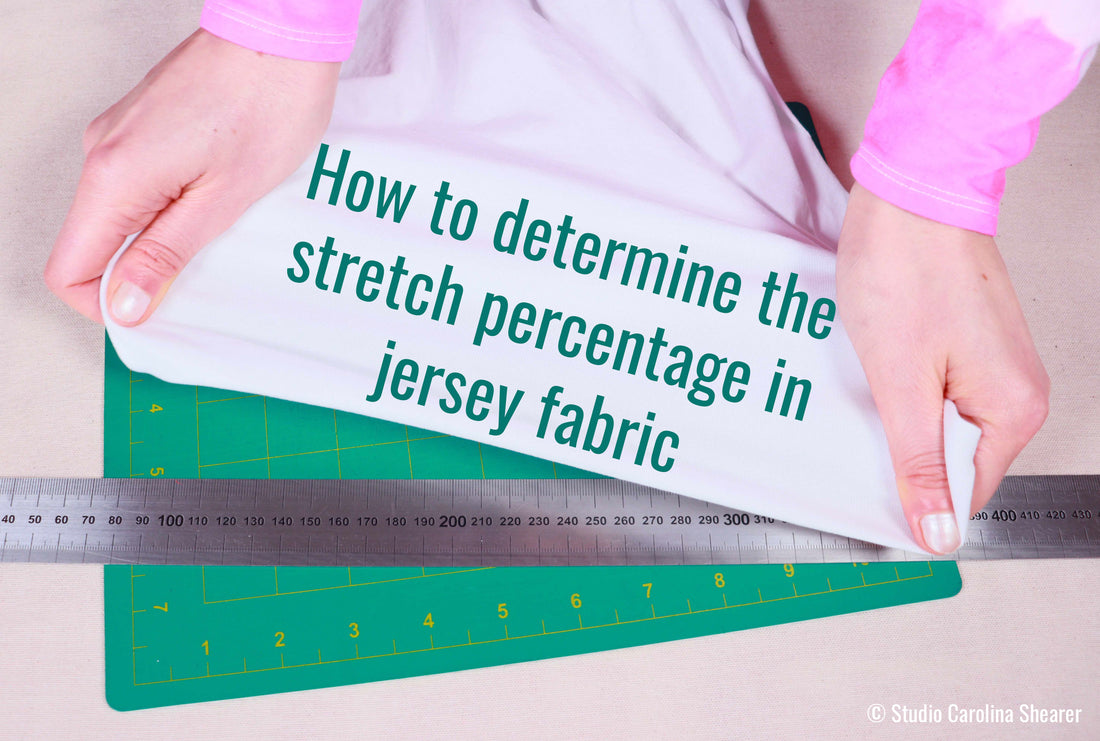What is "Stretch Percentage" you say?
Often times patterns made for knit fabrics will state the recommended “Stretch Percentage” or “Stretch Factor” of the fabric, which is a measure of how stretchy the fabric is. It sounds a bit complicated at first and if you’re new to sewing knits you might be tempted to just wing it. But using the wrong stretch will literally make or break your garment! If your fabric is stretchier than the recommended stretch percentage your garment should still be fine, but going below the recommendation will result in an ill-fitting piece which you’ll probably avoid reaching for in your wardrobe.
I consider myself a self-proclaimed master of “winging it” but after learning the hard way I can assure you that stretch percentage is better not ignored! And it’s actually very easy to calculate and can quickly be done in the store before buying the fabric.
2-way and 4-way stretch, what's the difference?
Knit fabrics come in both 2-way and 4-way stretch varieties. 2-way stretch implies that the fabric stretches horizontally, from selvage to selvage/perpendicular to the straight grain. On the other hand, 4-way stretch indicates that the fabric stretches both horizontally and vertically.
Typically, knits exhibit the greatest stretch horizontally. Hence why the stretch percentage is usually measured perpendicular to the straight grain.
Certain patterns may specifically call for 4-way stretch fabric. In such instances, it is necessary to measure the stretch in both horizontal and vertical directions. But the principal is the same.
How to measure the stretch percentage / stretch factor:

Start with folding the fabric perpendicular to the straight grain.

Align the folded edge with a ruler and take a length of 10 cm / 4" of relaxed fabric between your hands.

Stretch out the fabric, keeping one hand at the zero mark of your ruler. Measure the length it comfortably stretches to without distorting. When stretching the fabric imagine it as a garment and how it would be comfortable to wear. If the fabric is too stretched out the fit will be unpleasantly tight and constraining.
My fabric in the image above stretches to 15 cm / 6" which equals a stretch percentage of 50%.
If you use a length of 10 cm every 1 cm stretched is equal to 10%, so if it stretches an extra 5 cm (15 cm in total) it has a stretch percentage of 50%. 13 cm = 30%, 18 cm = 80% and so on.
Stretch Percentage Calculation

Metric system:
CM: (Y-10)/10 x 100 = Z
Y = Measured Value
Z = Stretch Percentage
Ex: (15-10)/10 x 100 = 50%
Imperial system:
IN: ((Y x 100)/ 4) = 1Z
Y = Measured Value
Z = Stretch Percentage
Ex: ((6 x 100)/ 4) = 150
What is "Stretch Recovery":
Another term you might have come across when working with knits is "Stretch Recovery". Fabrics vary in their ability to bounce back to their original shape after being stretched. Those that quickly return to their initial form have good recovery.
Typically, fabrics containing more elastane tend to have superior recovery compared to those with minimal or no elastane content. This makes them ideal for crafting snug-fitting garments like activewear or swimsuits, ensuring the garment maintains its shape even after extensive stretching during wear. Not all garments require good fabric recovery though, it depends on the cut and fit of the finished piece. For example tight fitting leggings will require a fabric with good recovery to avoid sagging in the knees and bum, while a loose sweater needs no recovery at all.
How to measure the stretch recovery:
Measuring the stretch recovery is much the same as determining the stretch percentage. You will start with your 10 cm piece in between your hands just like before, but this time place a pin at the 10 cm mark. Now stretch the fabric, just like before, and when you have reached the maximum stretch you let the pinned side of the fabric go. While still maintaining your other hand at the zero mark.
If the pin snaps back to the 10 cm mark where you started it means that the fabric has 100% recovery. However if the pin does not snap back to the starting point it means the fabric has less recovery and won't maintain a tight fit after a couple of wears.
Therefore, when choosing fabric, it's essential to assess both its stretch factor and recovery capabilities to ensure it suits the requirements of your sewing project.
Hopefully this sets you on the right track to nailing the fit of your next knit sewing project!Happy sewing,
Carolina <3

